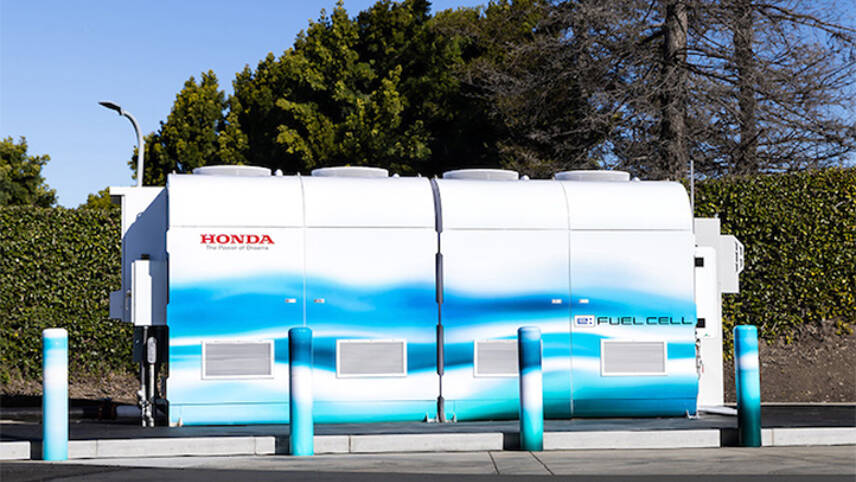Register for free and continue reading
Join our growing army of changemakers and get unlimited access to our premium content

Typical stationary back-up generators tend to run on diesel fuel
Honda has unveiled a trial project that will utilise fuel cell technology to act as a clean hydrogen backup power source, as it builds towards its goal of achieving carbon neutrality for all products and corporate activities by 2050.
The fuel cell demonstrator project is being utilised on its corporate campus in Torrance, California. The demonstrator project is fully operational and sees the fuel cell units provide clean emergency backup energy for the data centre on its campus.
The stationary fuel cell unit has a 500kW capacity and reuses the fuel cell technology from previously leased Honda vehicles. The design process allows the output of the unit to increase by 250kW for every four fuel cells added. The unit can also be rebuilt to account for different shaping needs, and can be installed as a cube, L-shaped, or Z-shaped system.
Honda currently utilises long-term virtual power purchase agreements (VPPAs) for renewable wind and solar power seeking to cover more than 60% of the electricity that Honda uses in North America. However, typical stationary backup generators tend to run on diesel fuel.
“We believe there’s great promise in hydrogen fuel cells for backup power and offsetting potential peak power events,” Honda’s project lead of the stationary fuel cell Koji Moriyama said.
“By installing and utilising our core technology, the fuel cell system, in various applications such as stationary power generation, Honda aims to stimulate hydrogen usage and provide clean energy for potential commercial customers.”
The demonstrator project ties into key sustainability goals for Honda. As well as aiming to become carbon neutral by 2050, the carmaker is also striving to embed the circular economy so that it has zero environmental impact by 2050.
The company has been an industry leader in hydrogen technologies and has been developing fuel cell vehicles for more than 30 years. Starting in 2024, Honda will launch an all-new hydrogen fuel cell vehicle from its manufacturing centre in Marysville, Ohio.
More broadly, Honda has committed to ensuring that electric vehicles (EVs) and fuel cell technologies represent 100% of its sales globally by 2040.
Testing tech
Honda joins the likes of Microsoft in trialing fuel cell technology for data centres. Microsoft recently worked with fuel cell system developers Plug to install hydrogen fuel cells in two 40-foot shipping containers on its land in Latham, New York. The aim was to test whether they could be a practical alternative to diesel-powered backup generators for data centres, which have high energy demands because they must be operational for more than 99.99% of the time to provide the reliable services upon which most of the digital economy depends.
The finding paves the way, the technology giant states, for the adoption of hydrogen fuel cells across the world where backup generators are used, such as at data centres, for hospitals, in the construction sector and at live events.
But this large-scale adoption should only be attempted, Microsoft stated, “once green hydrogen is available and economically viable”. More than 90% of all global hydrogen in the past year has been ‘grey’, involving manufacturing based on unabated fossil fuels. This means that green hydrogen does not yet benefit from cost reductions from economies of scale. The EU has noted that green hydrogen currently costs between about $3/kg and $6.55/kg, compared to $1.80/kg for fossil-derived hydrogen.


… and where does the hydrogen come from? With all renewable + nuclear power generation already consumed by other needs until at least 2030, the only possible source of hydrogen is from burning more hydrocarbons. Indeed, every ton of hydrogen CO2e requires the burning of 2+ tons of hydrocarbons. EDIE – please, please find someone authoritative who can work through exactly the ramifications of hydrogen switching before nuclear+renewables can provide excess xero-carbon power.